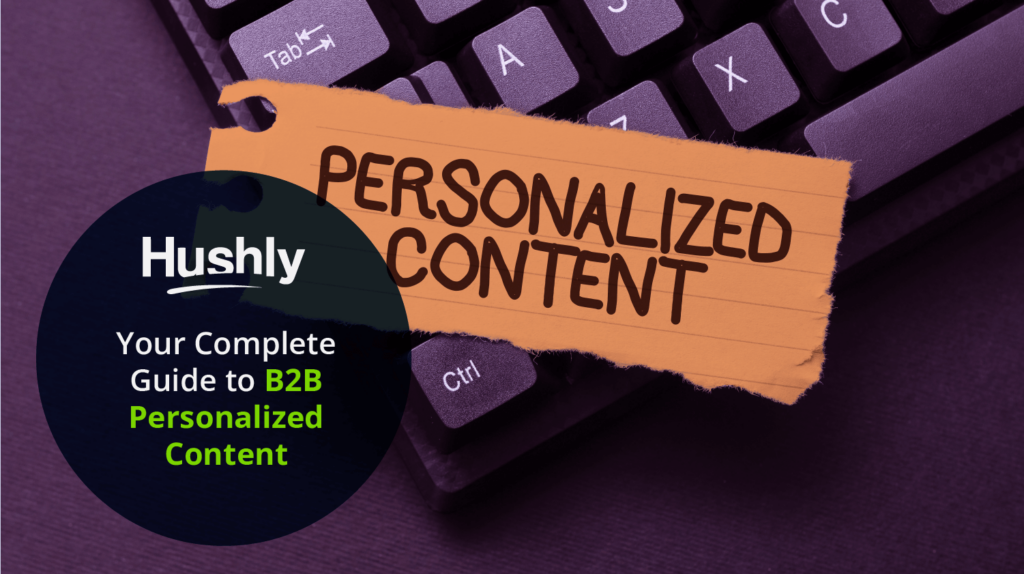Filters
Content Type
Topic
Customer Experience vs. Content Experience: What Exactly is the Difference?
Content is king, but a good customer experience can make or break your brand’s success. That’s why, at least in theory, the two should be inextricably linked. But is that really the case? As a marketer, it’s your job to ensure that your content provides the highest quality experience to your audience, but is that the same thing as ensuring that your entire brand experience delivers the best experience to your customers? Well, not quite. When it comes to customer experience vs. content experience, the two are certainly related, but they are not the same thing.
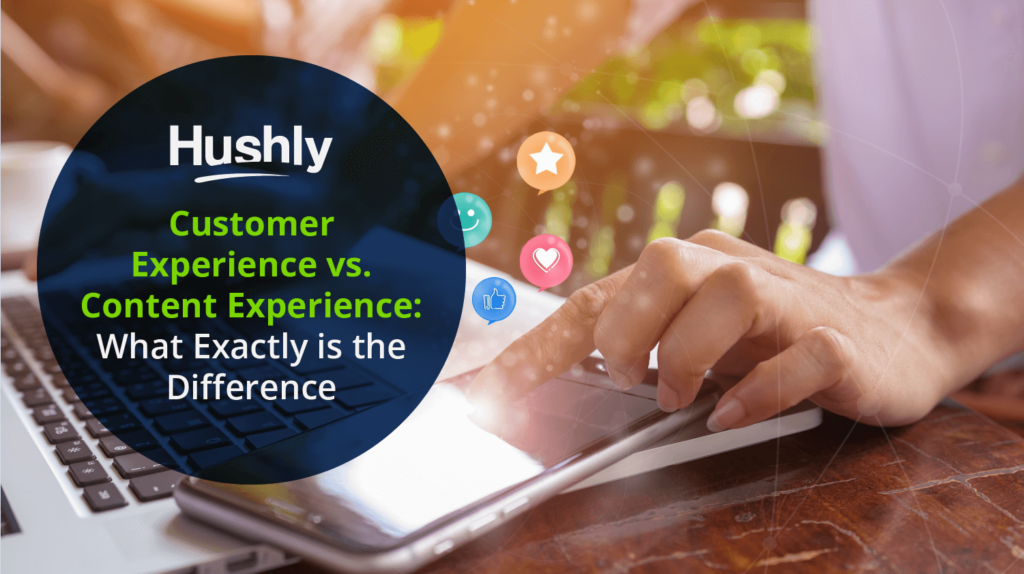
Customer Experience vs. Content Experience
What’s the difference when it comes down to customer experience vs. content experience? The two terms are often used interchangeably, but they refer to two different things. While they are both crucial parts of any B2B customer engagement strategy, it’s essential to understand the difference between the two:
Customer Experience
If you ask most B2B brands how vital their customer experience is, approximately 76% of them will tell you it’s one of their top priorities. However, studies show that only 30% of B2B buyers believe that brands provide excellent customer experience.
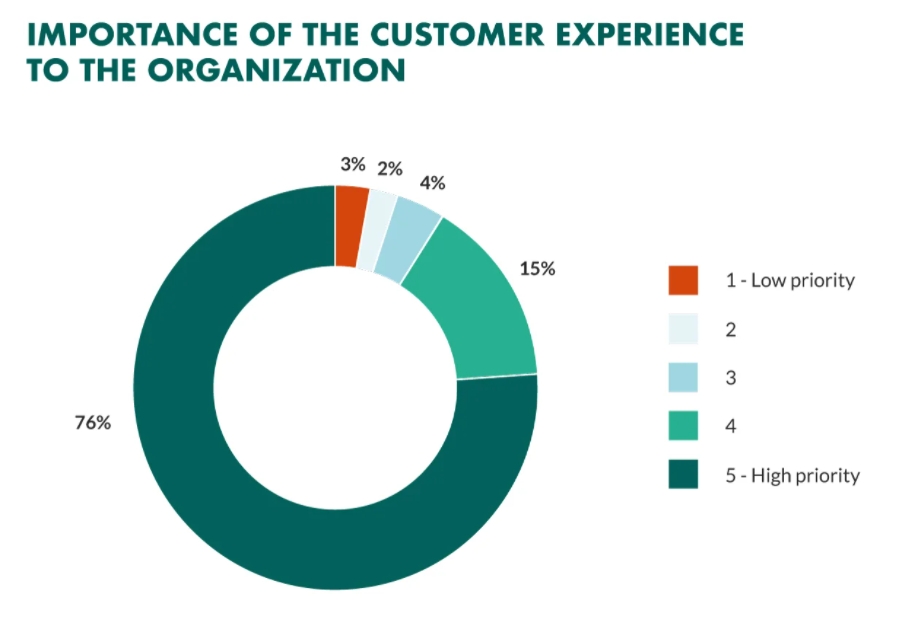
Source: SuperOffice
That’s quite the disconnect between what brands say they value and what consumers believe. The reason for this is that, while customer experience is undoubtedly necessary, many B2B companies don’t have a clear definition of what that means.
The customer experience (CX) is a term that describes the entirety of the experience that a customer has when interacting with your brand. It encompasses everything from the moment that a potential customer first interacts with your brand (via a content piece, blog post, etc.) through to the conclusion of the customer journey.
The key here is that the focus of CX is to ensure that your customers feel like they are well-taken care of at every stage of the customer journey. This can be accomplished in several different ways. Still, the goal is always the same: to create a positive experience that will ultimately increase the likelihood that a customer will return to your brand in the future.
Content Experience
Content experience, while a part of a well-rounded customer experience, is an entity all its own. Instead of focusing on all interactions between the customer and your brand, content experience focuses on the experience of accessing, consuming, and engaging with your content across multiple devices, platforms/channels, and throughout the customer’s lifecycle.
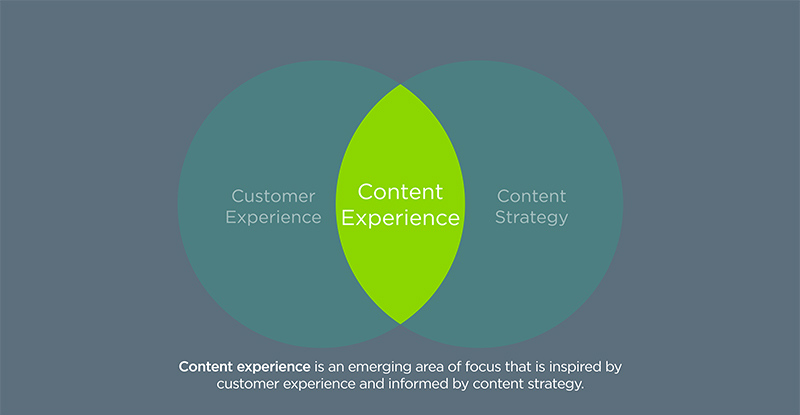
Source: Tendo Communications
Essentially, it combines the customer experience and your content strategy to create a holistic experience that provides your customers with the best possible experience at every touchpoint. This not only ensures that your customers have a positive experience, but that they develop a better understanding of why your brand is the right fit for them, ultimately increasing the likelihood that they will become loyal customers in the future.
One of the most significant benefits of focusing on your content experience is that you’ll cater to your audience’s needs at every stage of the customer journey. By optimizing your content experience for your audience, you can ensure that your content is relevant and provides your customers with the best possible experience. This not only helps to improve the quality of your content, but it also helps to increase the likelihood that your customers will be able to find the answers they are looking for, increasing the brand loyalty of current customers and the acquisition of new customers.
Why You Need Both for a Strong Customer Engagement Strategy
While it’s easy to get caught up in the hype of the ongoing digital revolution and think that CX and content experience are entirely separate entities, the truth is that they are both crucial to an effective customer engagement strategy.
If you focus exclusively on one aspect of your customer experience, you risk neglecting the other. This means that you could end up providing an experience that is significantly below industry standards, which will ultimately result in the loss of potential customers.
Unfortunately, this is a common problem for B2B consumers. Studies show that B2B buyers are growing increasingly frustrated with their overall B2B digital experience, with 43.7% of buyers saying they can’t get answers to simple questions quickly/efficiently and 37.4% saying that the services they receive feel impersonal.
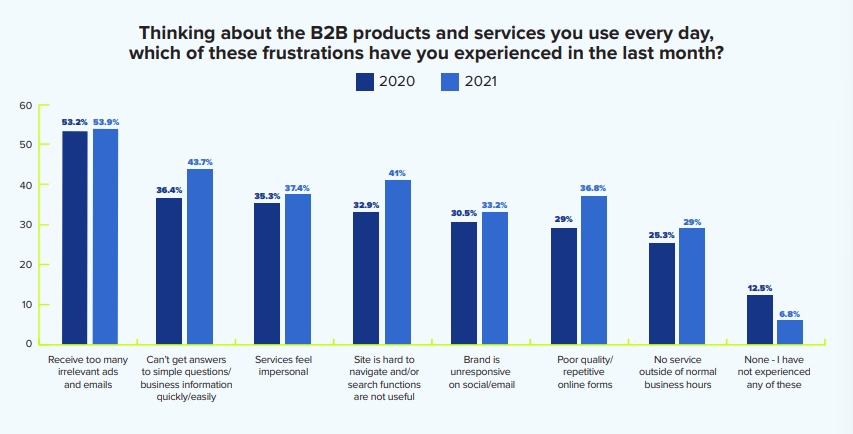
Source: Drift
While optimizing your customer experience is crucial for your overall customer engagement strategy, you cannot neglect your content experience. With B2B buyers now consuming an average of 13 pieces of content before deciding whether they will do business with your brand, ensuring that your content is optimized for your audience is a crucial step in providing a satisfactory customer engagement experience.
However, the biggest mistake that brands make when it comes to their content experience is that they don’t focus on creating personalized, engaging content that resonates with their target audience. By optimizing their content for their audience, brands can increase the quality of their content. Still, they can also improve the overall likelihood that their audience will find the answers they are looking for.
When it comes to customer experience vs. content experience, there is no question that you need both to provide a satisfactory customer engagement strategy. This not only ensures that your customer’s experience is one worth returning for, but that they are getting the content that allows them to make an informed decision about your brand, your authority, and whether or not they can trust you with their personal success in the long run.
Improve Your Customer Engagement with Hushly
As the digital landscape continues to evolve rapidly, it has become more critical than ever to ensure that your brand is optimizing both your customer experience and your content experience for your audience. This will ensure that your customers receive a satisfactory experience and find the answers they are looking for when making purchasing decisions.
By investing in the right tools and techniques, you can ensure that your brand provides a strong customer engagement strategy that will improve your bottom line and allow you to provide your customers with a world-class brand experience.
If you’re ready to see what Hushly can do to help with your customer engagement, then request your demo today!
The post Customer Experience vs. Content Experience: What Exactly is the Difference? appeared first on Hushly.


